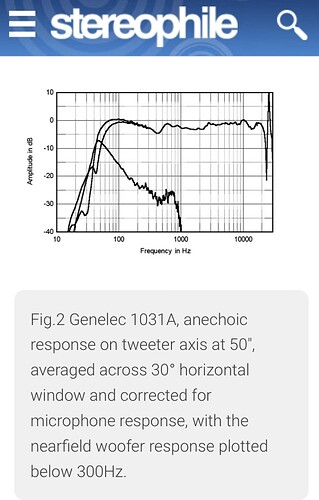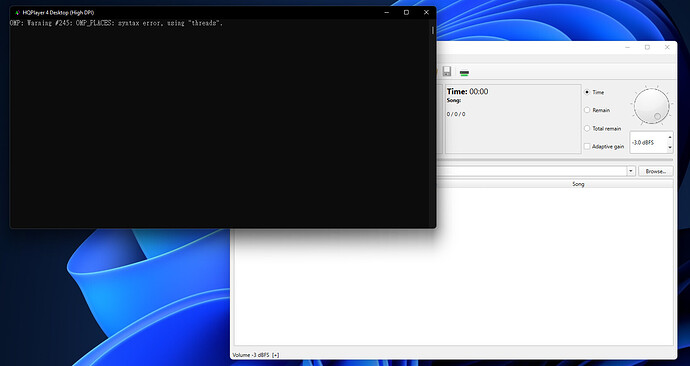It’s all subject to my aging ears which roll off at about 16k.
I’ve set poly-sinc-ext3 for 1x and nx, same as when trialing gauss-xla. My hearing is ok for my age but being over 60, I don’t hear the highs like some do and I find it difficult to hear differences between the various filters I have tried. What I do know is that some filters like ext3 bother my ears/head after a period of time.
What “is” working for me and pleasing for extended periods is: poly-sinc-ext2, ASDM5EC @ DSD 256 into a Denafrips Pontus II dac via NAA on an ultraRendu.
You and I may not hear anything at 25kHz.
But a simple (mechanical) example of what I was trying to say: a metal dome tweeter that resonates at 25 kHz can result in some ringing which could ripple down in the more audible range.
That 25 kHz may be music or may be HF garbage that was captured during hi-res recording.
So depending on the tweeter design, there is a chance we could hear the effect of this resonance that starts happening at 25kHz (we can’t hear that directly) but ripples down.
A filter for Nx that filters more HF hash in the hi-res recording, a bit earlier, maybe helps in that way?
I don’t think discussion of noise over 20 kHz is always about directly hear at those frequencies- but how this can possibly affect the more audible range.
Another example is digital images that Jussi always talks about. These are often at multiples of 192kHz or 384kHz. It’s not about hearing at those numbers.
Maybe… just fun discussion 
Most tweeter measurement plots stop at 20 kHz because most metal dome tweeters roll off after and of course we don’t hear much directly, above.
But look what happens if the measurement is done beyond and plot shown
I expect 5 people to reply they don’t have metal dome tweeters and that none of this applies to them … but that isn’t the point of this example 
If you have HF garbage in the hi res music and a high bandwidth amp
Some other speakers have 20+ dB peak there. These are worst if you have leaky oversampling filters or do “NOS” at 44.1k rate. In such cases anything that appears at 19.1 kHz in source content also appears at 25 kHz. See Stereophile’s digital filter measurements for details on that, there’s a specific test for this case.
Notable things; soft-dome tweeters usually have resonance below cross-over frequency. So if the cross-over is correctly designed it doesn’t appear in the speaker output.
Ribbon/AMT planar tweeters don’t have such strong resonances and typically can go up to around 50 kHz. They just need a careful directivity control because their directivity strongly increase as function of frequency due to shape of the radiating area (planar instead of single point).
Don’t know why it took me so long to get around to trying it but my new favorite filter is xtr-lp-2s (DSD256/ASDM7EC).
It plays well with my M1 mini, but more importantly just sounds more organic and anolog to my ears than ext2 or gauss-long. I’m not sure if this has more to do with my DAC (Gustard X16), or my ears. Perhaps I just prefer long pre-ringing (I went into this thinking I preferred minimum phase variants and I’ve come to realize that I was mistaken).
Had you tried ext3? versus xtr-lp-2s
Yeah but I have to throttle the modulator back to non EC. Too much of a trade off IMO. It’s too early to tell for sure but I think I prefer xtr to ext in my system. It’s a much more dramatic improvement to me than the subtle differences between ext2 & gauss-long for example.
I’ve really been enjoying poly-sinc-short-mp lately. It’s not as sparkly as gauss-xla, but the music is meatier and more satisfying, especially over longer sessions. Unfortunately I don’t have the hardware to do the ECv2 modulators so sticking with ADSM7EC @ DSD256 into my Bricasti M3.
Re: xtr-lp-2s:
I was trying the recently added xtr-short–*-2s filters for Nx and thought they sounded very good. The obvious setup might be xtr-short-*-2s for Nx and xtr-*-2s for 1x … except that the xtr-*-2s filters are non-apodizing, and 1x source is often where you need that most from what I understand.
I have always been unclear on why some short vs long filters in the same family are apodizing and some aren’t.
Hello everyone, do anyone encounter a warning at HQP startup recently?
I am using the latest Alder Lake 12700k with Windows 11.
The HQPlayer version is 4.14.0
I tried to change to some different filters but all have the same warning.
The message says:
OMP: Warning #245: OMP_PLACES: syntax error, using “threads”
I did some search in the forums but cannot find a way to fix it.
Does anyone have any idea?
Cheers,
A post was split to a new topic: Innuos USB reclocking & HQ Player
This is a bug related to 12th Gen Intel CPUs with efficiency cores. You can ignore it and just minimize the window. It will be fixed in the next release.
I’m loving the sound I get using sinc-Mx / LNS15, very nice wide soundstage and deep presentation. Maybe it’s my hifi system but I much prefer the sound of PCM to that of DSD.
I have a question for @jussi_laako: If I’m using sound levelling in Roon is it still necessary to have the HQP volume set at -3dB or can I use 0dB? I have a Unsion Research S6 tube amp and would prefer using the volume on the amp at a lower setting. If so, do you mind explaining why as I thought it was to prevent audio clipping which would be done by Roon volume levelling, correct or not.
I also have the same question to @jussi_laako.
Which DAC ?
Unison Research CD Due.
If you mean something like replay gain, IOW, track dependent level adjustment, then you should still use -3 dB setting in HQPlayer as it may reach 0 dB (or anything higher than -3 dB) on some tracks.
If you mean some static value, then don’t do that in Roon, but send bit-perfect data to HQPlayer instead and leave HQPlayer volume at -3 dB.
In general, it is better not do any DSP at Roon side, but instead do it at HQPlayer side.
Thanks Jussi. I like to use the album levelling in Roon which uses replay gain (-14LUFS) when I just want to hit shuffle on certain genres in Roon. So what I gather is keep the -3dB volume setting.
Does HQP only use the replay gain that is in the metadata of the file or can it use Roon’s audio analysis of the file? Because not all my files have replay gain metadata in the file?
Yes, in that case you’d need to keep the -3 dBFS setting.
HQPlayer uses metadata in the file or internet stream. However, when you are playing through Roon, none of this metadata is available, because Roon only provides the raw decoded audio to HQPlayer so any metadata is lost. And HQPlayer doesn’t have any access to any data Roon may have.
As long as source format doesn’t change, HQPlayer doesn’t even know where the track boundaries are.

